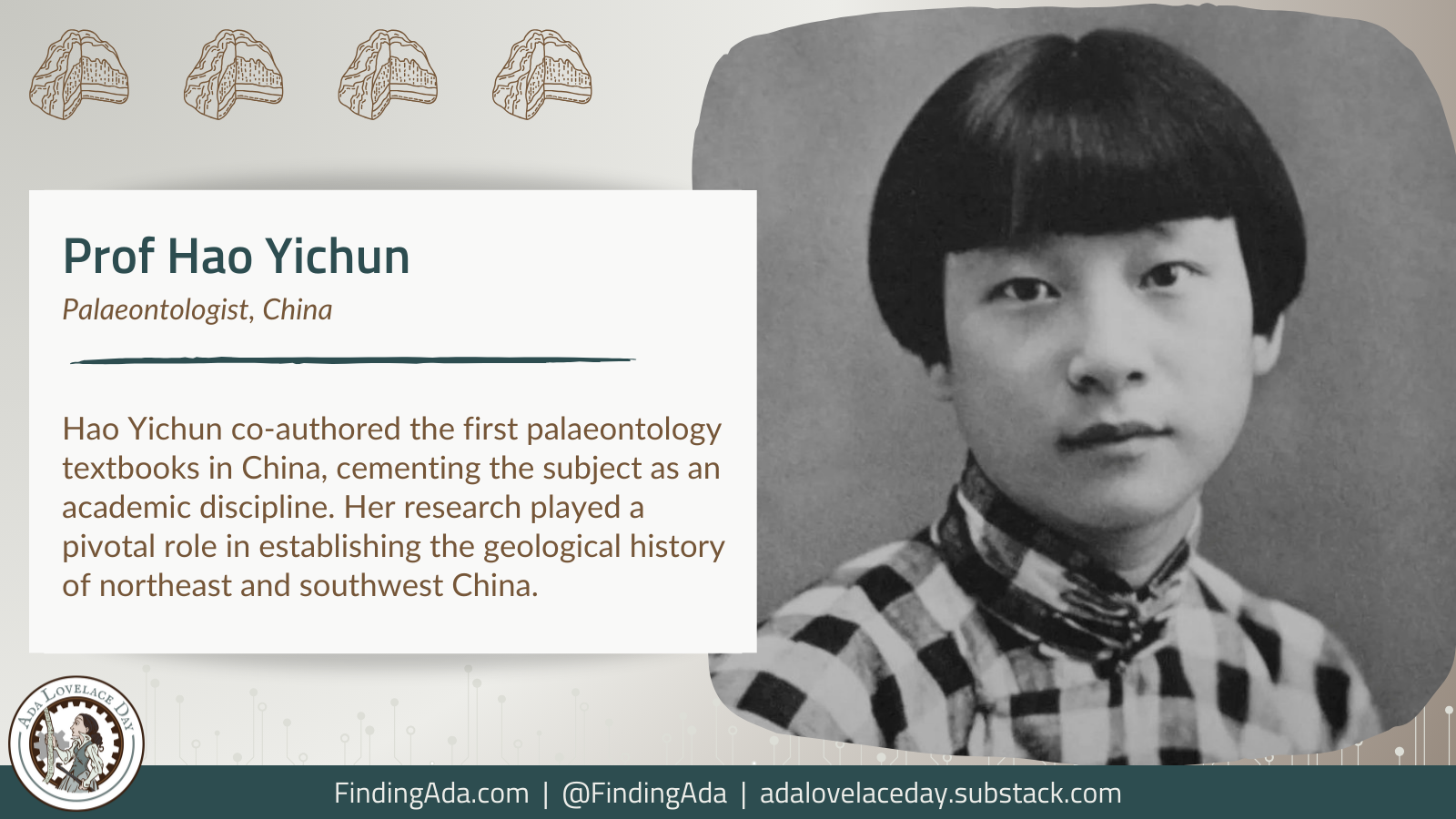Professor Hao Yichun
Hao Yichun, 郝诒纯, was a Chinese geologist who played a central role in establishing palaeontology as a discipline in her home country. The co-author of China’s first palaeontology textbooks, she was recognised for pioneering the fields of stratigraphy, micropaleontology and paleoceanography. Her research helped illuminate China’s geological history, including the secrets of ancient marine organisms, and supported the exploration of energy resources.
Hao was born in 1920 in Hubei, central China. She studied geology at National Southwest Association University before completing a postgraduate degree in stratigraphic palaeontology (which combines the study of fossils with that of rock layers) at Tsinghua University, Beijing.
In 1946, Hao was hired by Peking University (now Beijing University) to lecture in geology, optical mineralogy and engineering geology. She transferred to the Beijing Institute of Geology in 1952, where she rose to the rank of associate professor and co-founded the major in stratigraphic palaeontology.
Hao was a prolific publisher of scientific research, and in 1956 co-authored Paleontology, China’s first ever academic textbook on the subject. Over her career, she embarked on numerous gruelling geological surveys in far-flung parts of China, mapping out ancient rock layers in the northeast and southwest of the country. Her stratigraphic research spanned the Mesozoic (including Jurassic-Cretaceous) and Cenozoic periods. She is especially recognised for furthering paleontological understandings of foraminifera, single-celled, shelled organisms mostly found in seawater.
Involved with the Chinese Communist Party since childhood, Hao was interested in how her research could enhance national energy infrastructure. She established courses on petroleum geology at the Institute of Geology and spearheaded the production of geological maps that supported the development of coal fields in China.
Her work also took her on research trips to countries that had friendly relationships with China, such as Cuba and the USSR. She was a visiting scholar at Moscow University from 1957 to 1959, a period during which she travelled to the Caucasus and Crimea to continue her studies of foraminifera, ostracods and their biostratigraphy.
Later in her career, Hao was made a professor at the China University of Geosciences, Beijing, and served as chairwoman of China’s Palaeontological and Micropalaeontological Societies. In 1980, she became an academician in the Academic Division of Earth Sciences of the Chinese Academy of Sciences.
Hao died on 13 June 2001, aged 80 or 81. The same year, a genus of pterodactyloid pterosaur discovered in Liaoning, China – the haopterus – was named in her honour. Another pterosaur found in Mongolia, Otogopterus haoae, has since been named in recognition of Hao’s “outstanding contributions on the Mesozoic palaeontology and stratigraphy in China”.
Further Reading
- Hao Yichun, Wikipedia
- A new Early Cretaceous pterosaur from the Ordos region, Inner Mongolia, Ji Shu’an & Zhang Lifu, Earth Science Frontiers, 2020
- The talented woman of Peking University — Hao Yichun (biostratigraphy, micropaleontologist), Museum of Peking University History, 29 March 2020
- Awardee Of Earth Sciences Prize: Hao Yichun, The Holeung Ho Lee Foundation, 2006
Written by Moya Crockett, with thanks to Stylist for their support.
